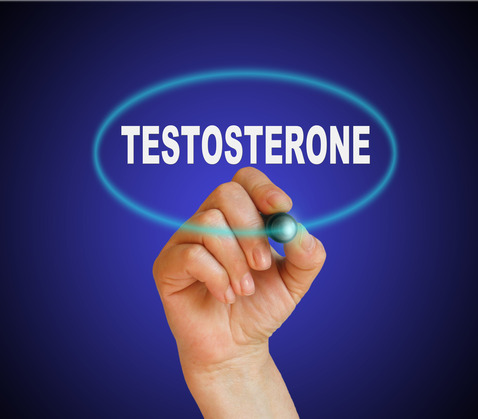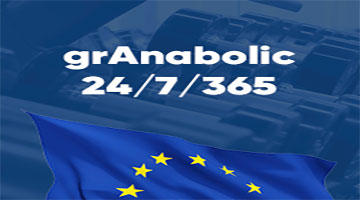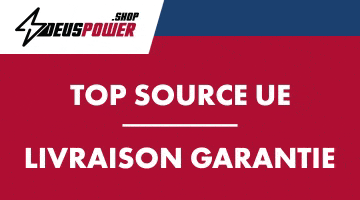We are going to talk about a subject that we hear (too much?) about on the different forums related to our passion: TRT. I will try to be concise about this subject which, for my part, is becoming commonplace with the young practitioners of our sport. How many times have I read sentences like “my relaunches are too difficult, I’m going to start TRT! It’s boring to lose your post-cure gains, you might as well be on testosterone all year long”?
Most of these phrases come from practitioners who confuse things. There is a clear difference between a “Blast and cruise” and a TRT or even an HRT. In this pamphlet, we are going to break some myths, explain things but above all explain the intrinsic difference of the methods related to men’s health.
What is TRT?
TRT is a method that has evolved over the centuries. Yes, you read that right, centuries. A little history…
Long before Aristotle, eating animal testicles was considered a testosterone booster. We had to wait for a certain Arnold Adolph BERTHOLD (middle of the 19th century) and his testicle transplants. BERTHOLD is considered the father of endocrinology. After many other experiments by many researchers, there was a real turning point in the middle of the 20th century, testosterone was chemically synthesized by Adolf BUTENANDT and the first testosterone treatments coincided with the discoveries on
HYPOGONADISM
.
So that brings us to the answer to our first question.
TRT is for hypogonadism!!!
Male hypogonadism may be hypothalamic-pituitary in origin, testicular in origin or due to androgen insensitivity. Hypogonadism can be congenital or acquired.
Physiological reminder
The testicle is made up of two main compartments:
- Leydig cells belong to the interstitial compartment. They represent less than 5% of the testicular volume. They secrete testosterone which acts directly or indirectly on the sexual differentiation of the external and internal genitalia, the development of secondary sexual characteristics at puberty, the maintenance of libido and sexual functions in the adult male. Normal plasma testosterone levels are 30-100 ng/L.
- The second compartment consists of the seminiferous tubules formed by Sertoli cells and germ cells. It represents 90% of the testicular volume and allows the production of approximately 30 million spermatozoa per day from puberty onwards.
The duration of spermatogenesis in men is 74 days.
Testicular function requires the integrity of hypothalamic-pituitary function. GnRH (Gonadotropin Releasing Hormone) of hypothalamic origin is secreted in a pulsatile manner every 90 minutes. It induces the release of LH (Luteinizing Hormone) and FSH (Follicle-Stimulating Hormone). LH binds to its receptor located on the membrane of the Leydig cells and stimulates the secretion of testosterone. FSH binds to its receptor located on the membrane of Sertoli cells.
Clinical signs
Physiological reminder:
- The average testicular volume is 18+/-5ml. It can be appreciated thanks to the Prader orchidometer which consists of a series of ovoids of volume ranging from 1 to 25 ml.
- Lack of puberty after the age of 14 years in boys should be considered as delayed puberty.
- Congenital hypogonadism cannot be diagnosed before puberty. After puberty, it manifests itself by impuberty or delayed puberty, gynecomastia (increase in size of the mammary gland to be differentiated from adipomastia). The testicles are small, the pilosity is absent or very weak.
Acquired hypogonadism
is manifested by a loss of libido, impotence, a decrease in hair growth (reduced frequency of shaving), oligospermia or even azoospermia (low or no sperm count) or gynecomastia.
Biological signs
- Hypogonadism of testicular origin is confirmed by high LH and FSH levels. Testosterone levels are low or within normal range.
- Hypogonadism of hypothalamic-pituitary origin is confirmed by a low testosterone level with normal or low gonadotropins. The GnRH test is used to assess the pituitary reserve of LH and FSH. It is not always possible to distinguish hypogonadism of pituitary origin from hypogonadism of hypothalamic origin. Hypogonadism of hypothalamic origin, if it is old, can present a lack of response to the GnRH test
Who is TRT for?
In this chapter, I’m going to push a little bit!!!
*Do you suffer from hypogonadism?
*Have you stopped your cures and do you plan to stop permanently?
*Are you sure you have done your follow-ups properly? I’m talking about relaunching that’s right for you with blood tests to match?
*Are you over 40 years old and do your natural tests show signs of weakness?
*And above all, have you gone to see an endocrinologist?
No to these questions? So why take the easy way out, especially between the ages of 20 and 40!!!
TRT should be reserved for men suffering from hypogonadism (of any age), for men who have used steroids, are finished with them and are suffering from the symptoms of hypogonadism, but not for young people in between treatments…
Note from Thor49: Only a competent and open-minded endocrinologist can prescribe proper TRT!!!
Adequate blood analysis
-ALAT
– ASAT
– Bilirubin and albumin.
– Total cholesterol
– HDL cholesterol
– LDL cholesterol
– Triglycerides
– Creatinine
– Urea
– Free (bioavailable) testosterone
– Estradiol/prolactin
-SHBG
– LH
– FSH
– TSH
– Free T4 (FT4)
– Free T3 (FT3)
What are the forms of TRT?
Testosterone-based gels
Gels like AndroGel® or Testim® are clear gels applied directly to the skin once a day. If you’re worried about applying too much or too little gel, products like AndroGel®, Axiron® and Fortesta® offer gels with pumps that ensure you get the proper prescribed dose. If you don’t like to rub the gel on your skin or if you’re worried about it getting on your clothes, you can apply the Natesto® gel to the inside of your nostrils.
Gels are the most common form of TRT in the U.S., generally work on more than 80% of patients and can increase testosterone levels after only a few applications. However, this treatment option requires a relatively high number of doctor visits to ensure that the proper amount of testosterone is absorbed. Dermal absorption rates may vary from person to person. Gels are one of the more expensive options for testosterone replacement therapy.
Patients also run the risk of inadvertently transferring the gel to others if it is not fully absorbed and contact is made with the application site or the hand used to rub in the gel.
Testosterone patches
Patches such as Androderm® are applied once or twice a day and applied to the upper body. They can also be applied to the scrotum if the patches irritate the skin excessively. The testosterone in the patch is absorbed through the skin and distributed into the bloodstream to increase testosterone levels.
In contrast, skin patches are easy to apply and mimic the normal daily rise and fall of testosterone levels. However, twice daily applications and reports of skin irritation and redness are around 40% of users. They are enough to deter many patients from using this treatment option.
Testosterone capsules (Andriol)
Testosterone undecanoate bypasses the liver and is reabsorbed from the intestine by the lymphatic system. Liver function is in no way affected by this process of reabsorption, and Andriol is generally considered very safe for prolonged use. Unfortunately, all is not well in “Andriol-land”. Many users report feeling nothing and those who do “feel” it usually use much more than the suggested dose.
Testosterone injection
Injectable testosterone is the standard treatment option. It can be used in all men except those with bleeding disorders. It is administered by intramuscular injection. Once injected, the solution gradually releases testosterone into the bloodstream.
The standard starting dose is an injection containing 200-250 mg of testosterone every 2-3 weeks. The dose may be reduced to 100 mg in very young or elderly men. The dose and frequency of dosing will be adjusted by the physician, depending on the response to treatment. Men who do not achieve an adequate increase in blood testosterone can increase the dose, while those who get too much testosterone in the blood can reduce the dose.
Testosterone injections that are given every two weeks are called short-acting injectable testosterones (e.g. Sustanon). Although they are effective in increasing blood testosterone levels and often improve symptoms (e.g., libido, mood, energy), testosterone levels and symptoms tend to fluctuate between injections. Men using these injections may experience very high spikes in testosterone levels and a resulting increase in libido and energy in the period immediately following the injection, followed by a period of much lower testosterone. Long-acting testosterone injections (e.g. Reandron), which are administered every 3 months, are an alternative for men who have the peak effect.
Long-acting testosterone injections provide testosterone replacement for 10-14 weeks.
Testosterone implants
Testosterone implants contain 800 mg of testosterone (usually in four 200 mg tablets). They are implanted in the buttocks or abdomen and provide testosterone replacement for about six months. The implants are replaced periodically, once the symptoms of testosterone deficiency recur. The insertion of the testosterone pellets is a minor surgical procedure, requiring local anesthesia. This is the main limitation of this treatment method. However, men using this form of testosterone replacement are generally satisfied with the method and are more likely to continue treatment than men using other modes of testosterone replacement.
Testosterone implants are not safe for older men, who have an increased risk of prostate cancer. If prostate cancer is diagnosed, testosterone replacement must be stopped immediately, which cannot be done if an implant is used. Implants are also not suitable for young men with bleeding disorders. Another form of testosterone replacement should be used first, so that a doctor can be sure that they will not have a negative reaction to testosterone, before starting this long-term treatment method.
The advantages and disadvantages of TRT
Effective testosterone therapy has many immediate and
immediate and long-term benefits
. These include:
Physics
*Increase in energy
*Increase in bone density
*Reduced risk of obesity, diabetes and metabolic syndrome
*Reduced risk of cardiovascular disease
*Reduced risk of osteoporosis
*Reduction of body fat
*Reduced risk of anemia
*Increase in lean muscle mass and muscle strength
Sexual
*Increased libido
*Increase in sexual enjoyment
*Increased satisfaction during erections
*Increased sexual activity
Psychological
*Improved mood and well-being
*Improved cognitive function and memory
Side effects and risks associated with testosterone replacement therapy
Side effects associated with testosterone replacement therapy are rare and vary depending on the age of the man being treated, his living conditions and his health. They include:
*Sleep apnea
*Reduction of testicular size and infertility: Due to the effect of testosterone on gonadotropins
*Mammary growth
*Skin diseases: occurs mainly with the use of transdermal patches
*Acne and weight gain.
*Prostate disease: Men with testosterone deficiency have a lower risk of prostate disease than men who produce enough testosterone. Prostate cancer growth is sensitive to testosterone levels. For this reason, prostate disease should be ruled out in men over 40 prior to testosterone replacement therapy (although there is no conclusive evidence of an increased risk of prostate cancer in men undergoing testosterone replacement therapy)
What are the dosages and protocols?
Reminder: Only competent endocrinologists/andrologists/urologists can prescribe proper TRT!!!
What are the components of a TRT?
In France, in most cases, only testosterone injections are prescribed.
That’s it!!!
Androgen replacement therapy in adults is done by intramuscular injections of delayed androgens (Androtardyl Retard 250 mg) every 15 days to 3 weeks. There is an oral form (Undecanoate of testosterone) that requires three daily intakes per day due to the short half-life of the product.
Androgen replacement therapy is contraindicated in cases of prostate cancer. It requires regular monitoring of the size of the prostate. Gynecomastia may occur at the beginning of androgen treatment. It is spontaneously reversible.
Note from Thor49: I find it too simplistic to say that 250mg of testosterone enanthate or cypionate every 15 days will be enough. The dose is specific to each individual and is related to our initial analyses. Indeed, for some, 50mg/week would be enough and not with a long ester…There, more than usual, the analyses are important!!!
To restore spermatogenesis, the treatment consists of a combination of intramuscular injections of hMG and hCG gonadotropins. hMG should be administered 3 times per week, hCG should be administered 2 times per week. Treatment should be continued for 12 to 18 months. The rate of spermatozoa obtained is around 5-10 million per ml, which is generally sufficient in these patients to obtain a paternity. GnRH pump treatment can be administered in men in case of hypothalamic pathology, but this treatment is more restrictive and above all more expensive. When paternity is obtained, only androgen replacement is necessary. (WTF?)
What? No HCG apart from restoration of spermatogenesis? No anti aromatase?
That’s where I think we’re a “little” behind. Why choose only long esters with the plasma variations they can cause if injected too far apart? Why not take AIs or HCG?
This is where I will make the distinction with
HRT (Hormone Replacement Therapy)
. In my humble opinion, readjusting only the testosterone level is not adequate. The goal is to rebalance our hormones.
What does it involve?
We must therefore rely on an AI such as arimidex (because it is reversible) or proviron (action on SHBG), HCG to allow activity of Leydig cells and testosterone. Here, we already have a good base stack for our TRT. We can even go further by adding a thyroid hormone that suits us (T3 or T4 or both) and a little HGH and there we have a luxury anti-aging stack.
So what is the difference between TRT, HRT and Blast and Cruise?
TRT is just an androgen replacement therapy.
TRT “plus” is the basis of TRT plus an anti-aromatase and HCG.
HRT is a balancing of the different hormones of the human body with androgenic, thyroid, anti-estrogenic and HCG or HGH treatment.
The Blast and Cruise is a set of cures interspersed with testosterone bridging between 2 cures.
Ok Thor49 but the doses?
I can’t answer this question because they are specific to each one according to our analysis (oh my!!!) and can evolve during TRT.
TRT Base
100mg/week of injectable testosterone
TRT “plus” basis possible
*100mg of testosterone per week
*0.25mg Arimidex EOD or 25mg proviron EOD
*HCG 250 to 500ui EOD
HRT base possible
*12.5mcg to 25mcg T3 or 50mcg to 100mcg T4 ED
*2ui HGH ED
*100mg of testosterone per week
*0.25mg Arimidex or 25mg proviron EOD
*HCG 250 to 500ui EOD
Source: Ncbi (much), worlclassbodybuilding, tigerfitness, T-nation, anasci and endocrinology courses on hypogonadism
Discussion of the article on the forum: https://musclesenmetal.is/forum/threads/article-sur-la-trt.22666/











